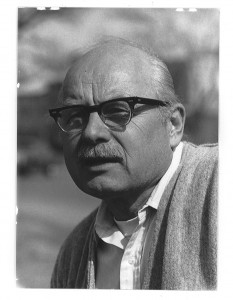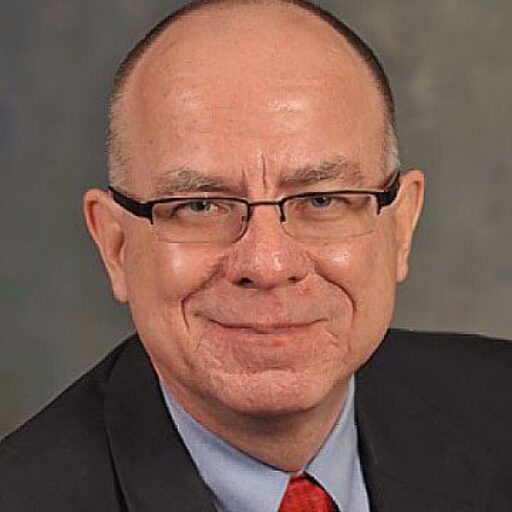
Rev. Maurice Vanderberg
With his recent passing, I was reminded that, even before I was born, Maurice Vanderberg was talking about many of the principles I’ve discussed in this column over the years. Rev. Vanderberg served as director of City Union Mission in Kansas City, Missouri from 1954 to his retirement in 1991. His Christian Life Program was one of the first long-term rehabilitation programs in the IUGM (now AGRM). More than forty years ago, he hung its purpose statement on the chapel wall; “marching orders” for every mission chaplain or counselor:
Our goal is to see that every man becomes a mature, contributing member of a Christian community
In Unto the Least of These, published by the IUGM in 1974, Maurice shares his thoughts about what makes an effective rescue mission recovery program. These excerpts from his chapter, “Ministering To The Whole Person,” illustrate that he was way ahead of his contemporaries.
He recognized that recovery is a process:
Unless we are able to comprehend that each person who comes to us is what he has become through a lifetime of experience, we will continue to deal with him as though the sum total of the person is that which just came through the door. We will fail to see him as the result of processes that took years to lead to this day. It is both our privilege and our obligation, by the help of God, to set in motion new processes that will begin to untangle the intricate web of time and circumstance so that the new man might be molded.
. . . I suggest that missions ought to see their unique function more clearly. They are not an end. They are only a means to an end.
. . . This is the business that we are in. If we are not prepared to meet the demands upon our time and energies, if we are not capable of exercising patience and stubborn determination, if we have not counted on disappointments and heartaches, and if we have not established a going partnership with God Himself, we have no business in the work.
And if we thought that rescue mission ministries implied a platform, a preacher, a dormitory, and a dining room to which a man could come for a night and go redeemed, transformed, glowing, and on his way to glorious prosperity, we have made a serious error in judgment.
He understood the balance between the “spiritual” and the “therapeutic.”
There has been an appropriate emphasis on spiritual programs, but almost to the exclusion of realistic solutions to the monumental problems of those coming to the mission for help. The awareness that Christ Himself dealt constantly with the total man (body, soul, and spirit) is not a revelation; but it is, nevertheless, a refreshing rediscovery that can immensely enhance the effectiveness of the rescue mission. I am reasonably sure that this statement will draw objections since, quite obviously, missions have commonly provided food, shelter, clothing, and some clinical care since the birth of the rescue method.
However, the “new discovery” involves physiological factors far more critical to recovery than these. They are essential to survival, but they have no rehabilitative qualities. There is danger, in fact, that to limit provision to the survival elements over a long period of time without providing physical and emotional repairment is to perpetuate the person’s problem, rather than to contribute to his recovery. He becomes an increasingly dependent person lacking the incentives necessary for recovery.
Maurice also recognized the need for “professionalism” among rescue mission workers:
There is no excuse for the lack of some clinical knowledge in the area of abnormal behavior. It is doubtful that a metropolitan area of any size at all is without numerous opportunities for lay persons to gain some knowledge and experience in this field. All colleges and universities now offer low cost adult training . . . hospitals and health centers have arrangements for basic training . . . . The National Council on Alcoholism has been holding training institutes. These are only a few of the many provisions that have been made to meet the pressure of our times. It is, therefore, incumbent upon mission workers everywhere to avail themselves to these opportunities to sharpen the tools of their crafts.
We are not asking for a new philosophy or new objectives. We are simply attempting to acquire new tools and become proficient in their use. We owe our clients every conceivable skill that we can acquire. The concept of ministering to the whole man is not a new one. It is, however, relatively new to the rescue mission.
He knew that assisting program participants to become integrated into a local church was vital:
It is a sad fact, however, [rescue missions] do not really affect recovery for an appreciable number of men and women. It is my judgment that this is because they have failed to incorporate into the formal planning of their program one element that can produce results. It may not in every case, or even in most cases, but for those men and women who are genuinely motivated to learn and to live a mature and productive Christian life, this element is divinely provided in the community of believers known as the local church . . .
. . . The church does, however, present a formidable aspect to most mission clients. It represents everything the man or woman is not, and holds a special terror for the subject, for it brings into sharp relief all of the failures that have cursed his or her life. We should all understand what it is like to go as a stranger into a situation that is not really congenial or comfortable.
The philosophy and approach to serving homeless people seen at today’s rescue missions is in a very large part due to the early efforts of this much respected Christian leader.
From RESCUE Magazine, August 1998. The journal of the Association of Gospel Rescue Missions.
Hear Scriptural Teachings on the Poor by Rev. Maurice Vanderberg on UrbanSermons.org



